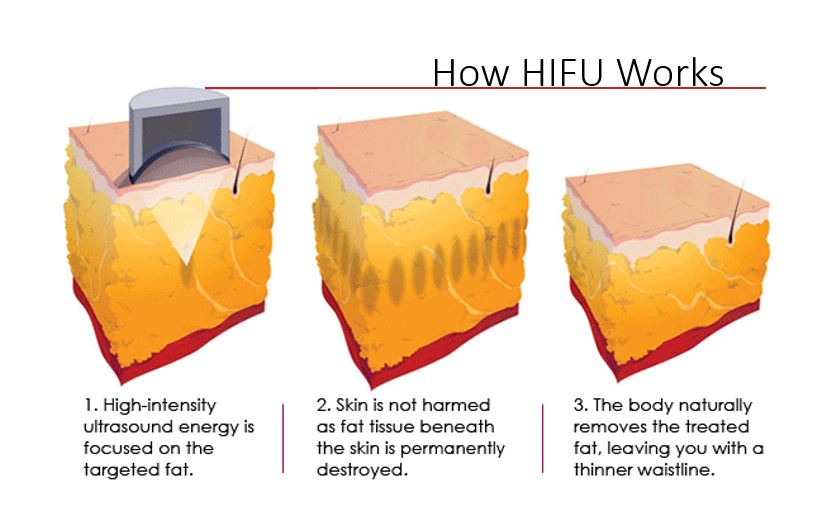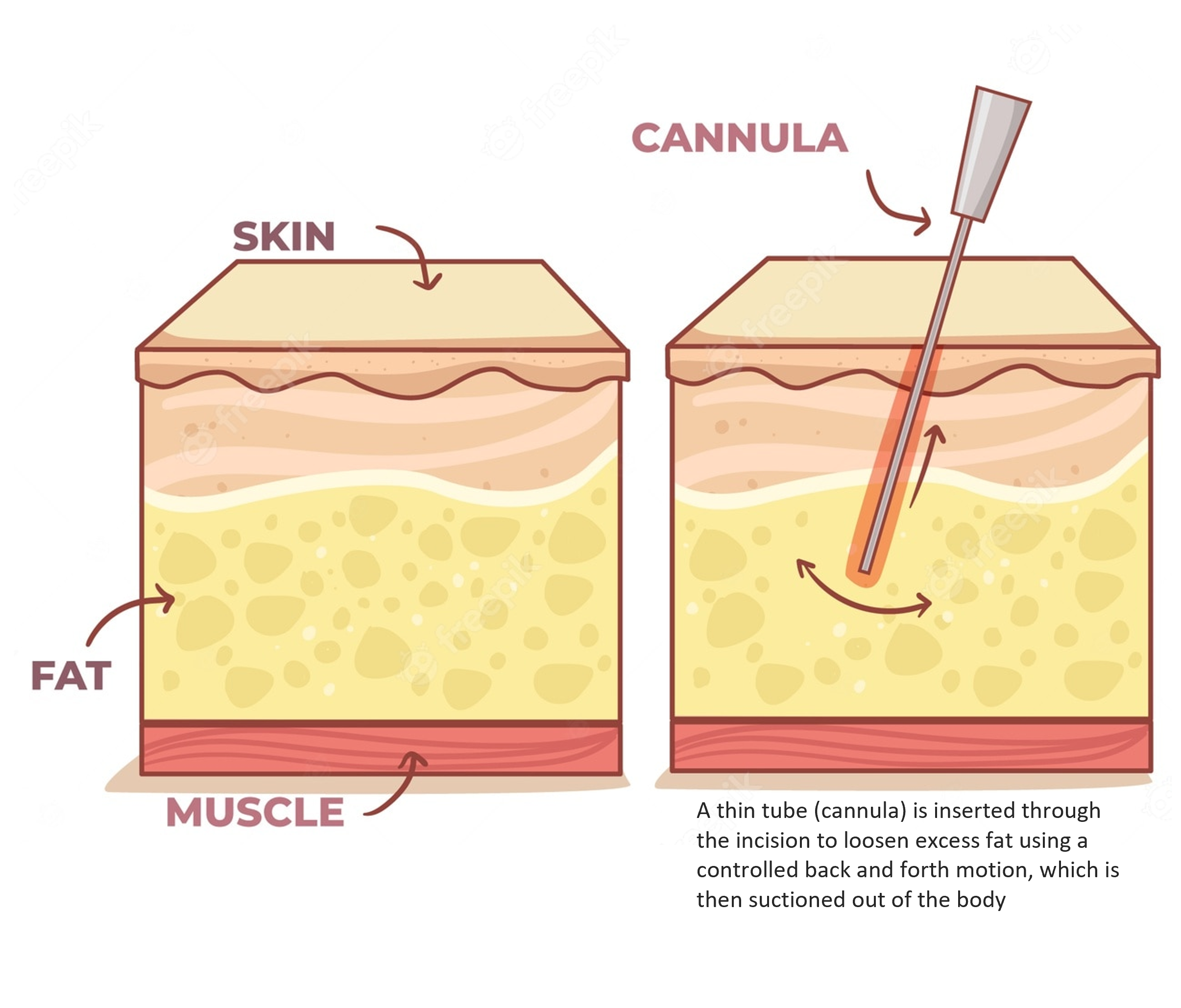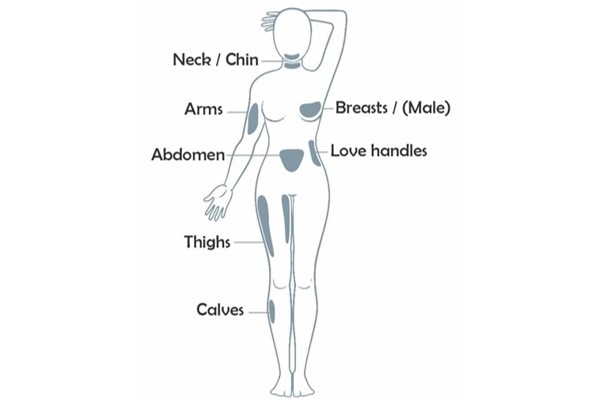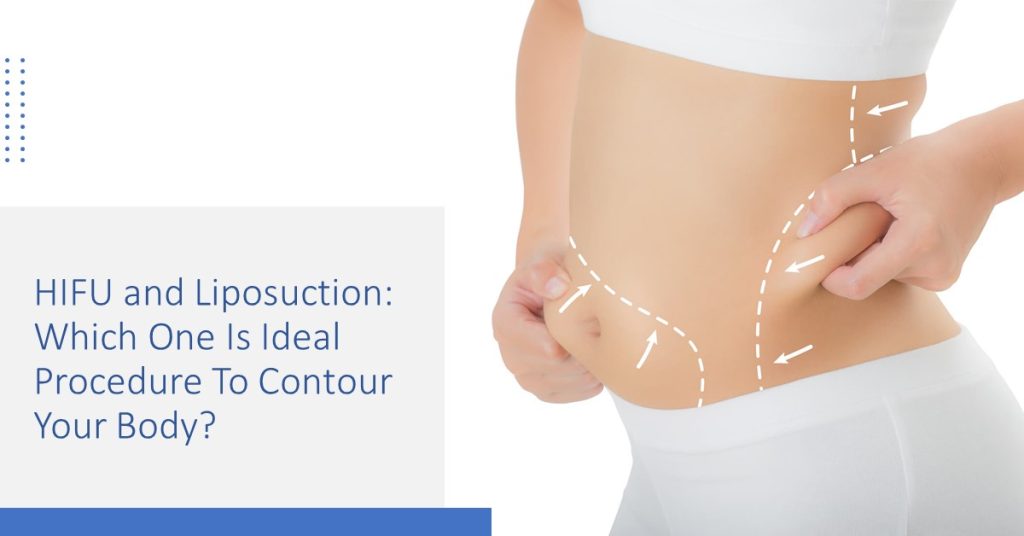Hiding bulges beneath Spanx and jackets, spending hours on the elliptical machine, and following a strict diet plan – all these can become too frustrating when those stubborn fat pockets don’t go away. The following procedures may be used to improve body contour and shapeliness.
HIFU (High-Intensity Focused Ultrasound), which always known by the treatment name, is a non-invasive option that uses ultrasound energy to destroy fat cells, while Liposuction is a surgical procedure that removes fat through suction. While both these procedures have the same goal of removing unwanted stubborn fat, they differ in terms of the approach and technology used.
This article highlights information about HIFU VS Liposuction to help you understand which of these procedures may be suitable for you.
It is essential to consult a qualified healthcare professional for proper evaluation and assessment before deciding which procedure is suitable for you. Additionally, it’s important to fully understand the potential risks, benefits, and recovery process of each procedure before making a decision.
How Should You Consider One Of These Treatments?
HIFU (non-surgical) and Liposuction (surgical) procedures are one of the treatment options when stubborn fat areas do not respond to tedious workouts and healthy diets. Often, these stubborn fat deposits are hereditary and refuse to leave on their own. HIFU and Liposuction are effective procedures for eliminating belly fat, thigh fat, and back fat.
Liposuction is a traditional, surgical cosmetic procedure to remove excess body fat by inserting a hollow tube into the fatty layer of the skin.
Whereas HIFU offers a non-surgical option that uses ultrasonic energy to target the fat beneath the skin.
To have a better understanding of these HIFU VS Liposuction, let’s have a detailed look at both of them:
HIFU VS Liposuction:

1. HIFU: Non-Invasive Fat Removal
HIFU is an FDA-approved, non-invasive procedure that utilises high-intensity focused ultrasound (HIFU) energy to target and destroy unwanted fat cells. The HIFU procedure promotes the natural elimination of the subcutaneous fat layer without causing any harm to the surrounding tissue because the fat cells absorb the ultrasound energy.
The ultrasound energy emitted by the HIFU handpiece destroys unwanted fat cells. These fat cells are converted into triglycerides, which are engulfed by macrophages. The macrophages then transport damaged fat cells from the body’s lymphatic system to the liver. The liver then metabolises the fat cells, which are flushed out of the body. This results in the permanent reduction of stubborn fat in the treated area [1].
The Procedure:

The HIFU procedure takes 20 to 60 minutes to be carried out, depending on the size of the area to be treated. During HIFU procedure, the patient may be given an oral pain medication to help manage the pain. During the HIFU treatment, the doctor moves the handpiece of the HIFU system on the marked area of the skin.
The ultrasonic energy emitted from the HIFU handheld device targets and destroys the subcutaneous fat tissue 1-2 cm beneath the skin, without causing any trauma to the surrounding cells. The patient may feel a prickling sensation, warmth, or mild discomfort.
Results:
This procedure eliminates fatty buildups, achieving a more contoured and aesthetically appealing abdomen and waistline [2].
The results of a HIFU procedure can be seen within 8 to 12 weeks after the treatment, with full results appearing over the course of several months.
2. Liposuction: Surgical Fat Removal
Liposuction, also known as liposculpture, is a cosmetic surgical procedure aimed at removing excess body fat from specific areas of the body, such as abdomen, arms, thighs, and buttocks. The Liposuction surgery removes unwanted fat pockets, particularly of subcutaneous variety to improve body contours.
The Procedure:

During this outpatient procedure, the patient is given local anaesthesia or intravenous sedation. The surgeon makes one or more tiny incisions in the area to be treated. A thin hollow tube is inserted through the incision into the patient’s fatty layer, which is moved back and forth to break fatty cells. The loosened fat is then extracted from the body through a suction device [4].
Results:
Based on the amount of fat removed, the results after Liposuction are usually visible between 1 to 3 months post-surgery.
HIFU VS Liposuction: Areas of Treatment:
HIFU and Liposuction are generally used to remove fat from the same body areas.

HIFU is commonly used to treat the abdomen and flanks.
Liposuction can be performed on various areas of the body, including the abdomen, hips, thighs, buttocks, and arms.
What Can You Expect After HIFU VS Liposuction Treatment?
1. HIFU:
You may experience a little downtime following the HIFU treatment. Tenderness, redness and mild bruising may arise in the treated area. Some patients also experience itching under the skin [5].
2. Liposuction:
After Liposuction, you can expect to experience swelling, bruising, redness, and discomfort. All these side effects occur for 1 to 3 weeks after surgery.
How Long Will The Side Effects Last?
1. HIFU:
The side effects associated with the HIFU treatment usually resolve within 7 days. But for some patients, it takes more than two weeks for redness and bruising to resolve. The patient typically can resume their work immediately after HIFU. The patient’s body starts flushing out destroyed fat over the next three months.
2. Liposuction:
You can return to work within a few days following the Liposuction procedure – it depends on the procedure’s extent and the job’s requirements. If you experience any side effects like redness, swelling, or bruising, your surgeon may prescribe medication to manage these side effects.
You may also be recommended to wear a compression garment for the next few weeks. This promotes optimal skin contraction by minimising swelling [6].
The scars of incisions gradually fade away over the months when proper care is given.
Are The Results Between HIFU VS Liposuction Permanent?
1. HIFU:
HIFU is a non-invasive procedure that permanently destroys fat cells from the treated area in just a single one-hour session. However, if a patient wants to achieve further fat reduction, he/she may require to undergo a second treatment session to achieve optimal results.
2. Liposuction:
Liposuction is a body-sculpting procedure that suctions out stubborn fat using a cannula (hollow tube) and suctioning device. Liposuction can provide results that last for a lifetime as long as you proactively maintain a healthy lifestyle, including a balanced diet and regular exercise.
HIFU VS Liposuction: Am I A Good Candidate For These Fat Reduction Treatments?
HIFU is intended for patients who:
- Have at least one inch of excess fat around their midsection.
- Struggle to eliminate the last bit of belly fat that doesn’t go away with exercise and a healthy diet.
- Have a Body Mass Index of 30 or lower.
Liposuction is ideal for patients who:
- Are within 30% of the goal weight.
- Have a substantial amount of excess fat to be removed.
- Is healthy enough to cope with stress and trauma put on the body during the surgery.
Your plastic surgeon can also assess whether you are an ideal candidate for Liposuction or HIFU. The plastic surgeon will conduct a comprehensive clinical assessment to determine the best course of treatment for the patient. This may include a physical examination, a review of the patient’s medical history, and a discussion of the patient’s goals and expectations.
During this consultation, the surgeon will advise the patient on the best approach for their individual needs and discuss the potential risks, benefits, and expected outcomes of the procedure.
It is important to note that these procedures are not intended to treat obesity; they have been designed to improve body shape and contour.
Non-Surgical VS Surgical Method: Which One’s Better?
While both HIFU and Liposuction are intended to remove excess fat permanently, they differ in how they achieve their goal. However, it is always best to consult your healthcare professional to achieve your goals. A certified plastic surgeon can provide you information about the benefits, risks, and results for both procedures so that you can make the suitable decision.
The following comparison chart of HIFU VS Liposuction can help understand the difference between these two procedures:
|
HIFU |
Liposuction |
|
| No. of treatments | May require more than one session | One |
| Procedure time | One hour (depending on the size of the area to be treated) | Two to three hours (depending on the size of the area to be treated) |
| Final results | 8-12 weeks | Between 1-3 months |
| Recovery time | Usually none | Several days to a few weeks |
| Resume usual activities | Same day | Within few days |
| Side effects | Mild discomfort, bruising, swelling, and redness in the treated area. | Swelling, bruising, redness, and discomfort. |
| Discomfort level | Mild to moderate | Varies from patient to patient. Some patients experience a considerable amount of discomfort, while for some patients, it is less intense. |
| Consultation needed before the treatment | Yes | Yes |
| Duration of results | Treated fat tissue is permanently destroyed, some patients undergo a second treatment session for optimal results | Contour changes are generally permanent as long as healthy lifestyle is maintained |
The Bottom Line:
HIFU and Liposuction are the two cosmetic procedures intended to remove extra fat from body areas that do not respond to exercise and restrictive diet plans. HIFU is a non-invasive procedure that disrupts fat cells using high-intensity focused ultrasound energy. At the same time, Liposuction involves the use of surgery to remove excess fat by making tiny incisions and inserting a hollow tube to break down fat cells. Both treatments have their own pros and cons. Results achieved from both treatments are permanent only if the patient does not gain excess weight.
References:
- Fatemi A. High-Intensity Focused Ultrasound Effectively Reduces Adipose Tissue. Semin Cutan Med Surg 2009;28:257–62. https://doi.org/10.1016/j.sder.2009.11.005.
- Fatemi A, Kane MAC. High-Intensity Focused Ultrasound Effectively Reduces Waist Circumference by Ablating Adipose Tissue from the Abdomen and Flanks: A Retrospective Case Series. Aesthetic Plast Surg 2010;34:577–82. https://doi.org/10.1007/s00266-010-9503-0.
- Shridharani SM, Broyles JM, Matarasso A. Liposuction devices: Technology update. Med Devices Evid Res 2014;7:241–51. https://doi.org/10.2147/MDER.S47322.
- Wu S, Coombs DM, Gurunian R. Liposuction: Concepts, safety, and techniques in body-contouring surgery. Cleve Clin J Med 2020;87:367–75. https://doi.org/10.3949/ccjm.87a.19097.
- Karacaoglu E, Zienowicz RJ. Noninvasive or Minimal Invasive Fat Contouring BT – Atlas of Whole Body Contouring: A Practical Guide. In: Zienowicz RJ, Karacaoglu E, editors., Cham: Springer International Publishing; 2022, p. 245–52. https://doi.org/10.1007/978-3-030-94755-2_18.
- Beidas OE, Gusenoff JA. Update on Liposuction: What All Plastic Surgeons Should Know. Plast Reconstr Surg 2021;147.







